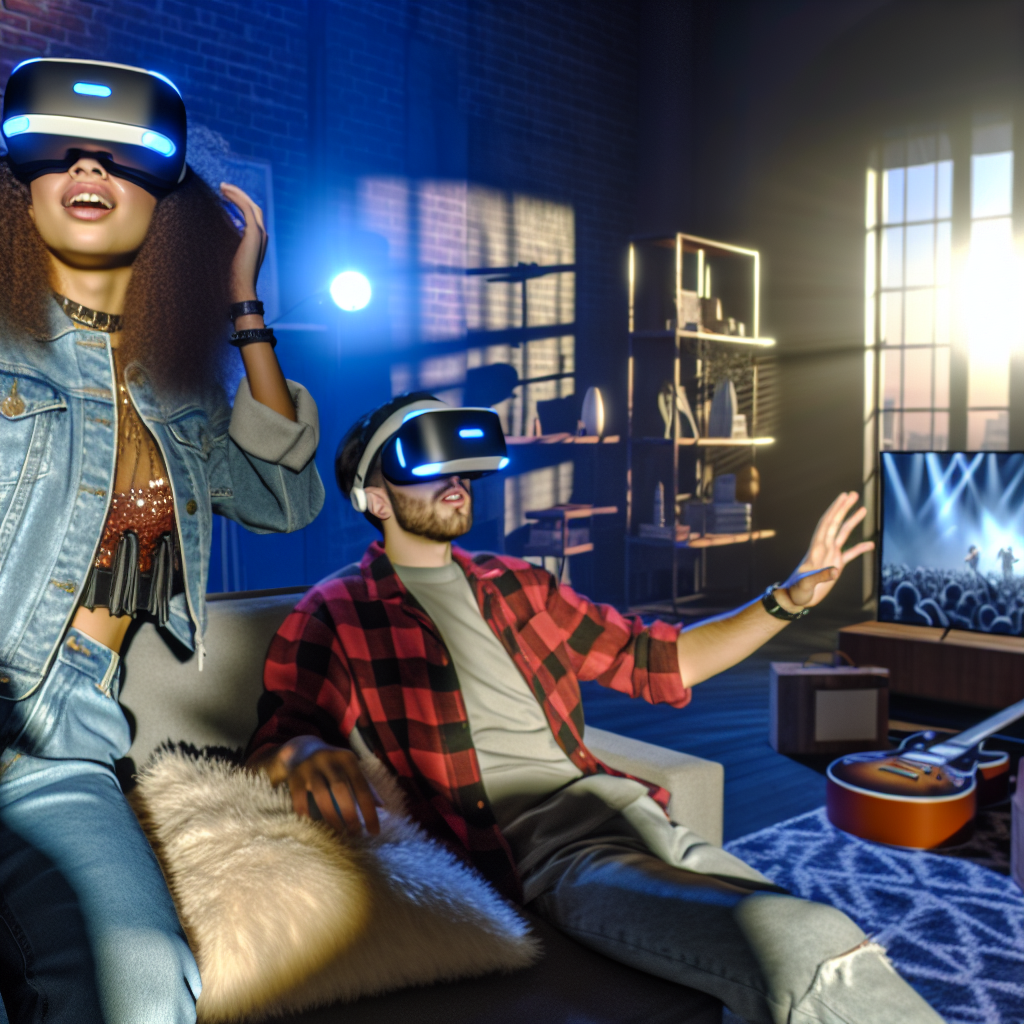
A few years ago, the idea of attending a live concert without leaving your living room might have seemed like a distant dream or a plot from a science fiction novel. Today, thanks to advancements in virtual reality (VR) technologies, this dream is becoming a reality. Virtual reality concerts are not just a novelty; they represent a significant shift in how we experience music. As someone who loves both music and technology, I’ve been intrigued by how VR concerts might shape the future of live music.
Imagine putting on a headset and suddenly finding yourself in a virtual arena, surrounded by a crowd of avatars, each representing a real person attending the concert from somewhere on the globe. The lights dim, the music swells, and your favorite band takes the stage not in pixels, but in a fully immersive 3D experience. This is the magic of VR concerts, a blend of digital artistry and musical performance that transcends physical boundaries.
A New Era of Accessibility
One of the most compelling benefits of VR concerts is their ability to democratize access to live music. For countless fans who live far from major concert venues, or those whose physical conditions limit attendance, VR provides an unprecedented opportunity to participate in events they might otherwise miss. In my opinion, this expanded accessibility is perhaps the most transformative aspect of VR concerts.
A friend of mine, who has used a wheelchair for years, attended a VR concert by her favorite band last year. For her, the experience was nothing short of liberating; she could navigate the virtual venue with ease, enjoy the music up-close, and interact with other fans without the physical barriers that typically hinder her.
The Technology Behind the Experience
The technology enabling these experiences is nothing short of remarkable. VR platforms like Oculus Venues and Wave have pioneered the development of virtual concert halls and interactive environments. They utilize high-definition 3D captures, spatial audio, and real-time interaction capabilities to create experiences that are stunningly realistic.
However, the technology is not without its challenges. High-quality VR headsets and stable internet connections are essential for the full experience, and these requirements may not yet be within reach for everyone. As VR technology continues to advance and become more affordable and accessible, these barriers are likely to diminish.
A New Dimension to Performances
For artists, VR concerts offer a canvas for creativity that traditional stages simply cannot provide. Imagine a concert where the stage transforms in sync with the music, where the audience can float through space or swim with sea creatures all possible in the virtual realm. This kind of immersive storytelling is a new frontier for musicians looking to connect with their audiences in innovative ways.
Yet, there is an unconventional observation worth considering: VR concerts might lack the tactile, visceral elements of a live performance. The vibrations of the bass, the shared energy of a crowd, and the spontaneous moments that create unforgettable memories are elements that VR cannot fully replicate. This raises a thought-provoking question: Can virtual reality ever truly replace the magic of being physically present at a live concert?
Social Connection in a Virtual World
One of the surprising advantages of VR concerts is the potential for social interaction. Through avatars, fans can chat, dance, and share the experience with friends or strangers from around the world. These interactions can foster a sense of community similar to that of a live event. According to me, this aspect of VR concerts could enhance the feeling of belonging among fans, particularly during times when gathering in large groups is challenging or impossible.
Consider the tale of a teenager from a small town who made friends across continents through a shared love for a VR-hosted concert. Despite thousands of miles apart, they experienced the same setlist, cheered at the same fireworks, and formed friendships that extended beyond the virtual stage. Stories like these illustrate how virtual reality can bridge gaps and create communities focused on common interests.
Challenges and Criticisms
Despite their many advantages, VR concerts face criticisms and hurdles that must be addressed. For one, the environmental impact of the technology cannot be ignored. The production and disposal of electronics necessary for VR can contribute to electronic waste, an issue already of growing concern.
Furthermore, while VR can simulate many aspects of live concerts, it can’t yet replicate the full sensory and emotional spectrum of a real-world experience. The lack of physical presence, the absence of serendipitous interactions, and the sense of shared space with performers and other fans are aspects where VR has room to grow.
Moreover, there’s a financial angle to consider. As more artists and companies invest in these technologies, the economics of the music industry could shift, impacting everything from ticket prices to artist revenues. Balancing innovation and inclusivity will be crucial in ensuring VR concerts are accessible to a wide audience without alienating those who prefer traditional live experiences.
Looking to the Future
In envisioning the future of live music, it seems likely that VR concerts won’t replace traditional concerts but rather will complement them. They offer a unique alternative, expanding the possibilities for fans and artists alike while preserving the cherished elements of physical performances.
In my view, the hybrid model, where artists perform in-person while simultaneously broadcasting in VR, could become a standard. This approach could cater to a broader audience, offering multiple avenues for experiencing music based on personal preference and circumstance.
Ultimately, the rise of virtual reality concerts is an exciting development in the entertainment industry. While still in its infancy, VR technology holds promise for revolutionizing the way we engage with music. As technology continues to evolve, it will be fascinating to see how artists, fans, and technology developers collaborate to enhance and redefine these experiences.
In this new world, whether you’re dancing in your living room or mingling with avatars in a virtual crowd, the love for music remains the common thread that binds us all. The future of live music might be virtual, but the emotions it inspires remain profoundly real.

